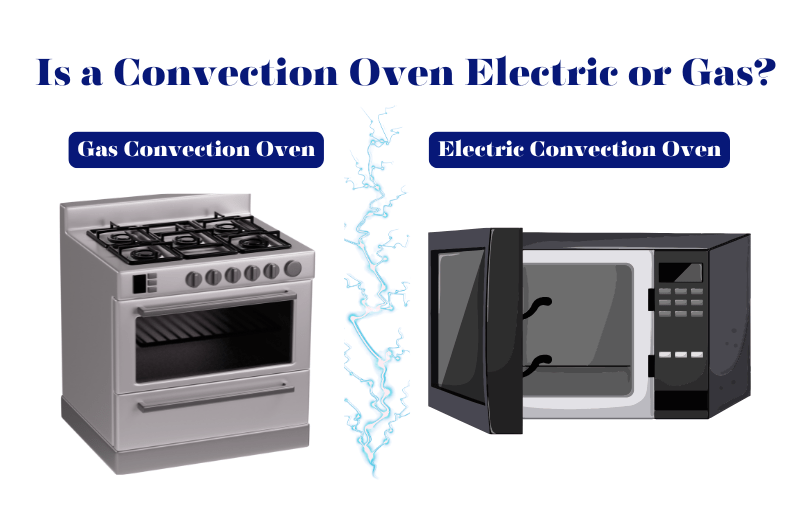Is a Convection Oven Electric or Gas? Get Expert Insights
When you’re choosing the best convection oven, it’s natural to wonder: is it electric or gas? The answer is both! Electric convection ovens offer steady, even heat, making them ideal for precise baking. Gas models, however, deliver quick, intense heat, perfect for roasting and searing. It’s like comparing a high-tech sous-vide cooker (electric) to a traditional grill (gas) — both are great but shine in different ways. Let’s figure out which one matches your cooking style and kitchen setup best!
Gas vs. Electric Convection Oven: Which Is Better for You?
If you love baking with precise, even heat, go for an electric convection oven. Prefer quick, powerful heat for roasting meats? A gas convection oven is your best bet. Ultimately, the right choice depends on your cooking style and kitchen setup.
| Feature | Gas Convection Oven | Electric Convection Oven |
|---|---|---|
| Heating Method | Uses gas burners for heating. | Uses electric heating elements. |
| Preheating Time | Faster preheating due to direct flame. | Slower preheating compared to gas. |
| Heat Distribution | Higher operating costs in areas with high electricity rates. | Even heat distribution; is better for baking. |
| Temperature Control | Less precise; fluctuates with gas flame. | Precise and stable temperature control. |
| Installation | Requires a gas line; may need professional setup. | Easier setup; just needs a standard power outlet. |
| Operating Cost | Generally cheaper if gas prices are lower. | Higher operating cost in areas with high electricity rates. |
| Initial Cost | Higher operating costs in areas with high electricity rates. | Lower initial purchase price. |
| Versatility | Great for roasting and high-heat cooking. | Better for baking and delicate dishes. |
| Safety | Risk of gas leaks; requires proper ventilation. | Safer, with no risk of gas leaks. |
| Maintenance | May require more frequent cleaning and checks. | Easier to maintain; fewer parts to inspect. |
| Durability | Long-lasting if maintained properly. | Typically long-lasting with minimal issues. |
| Energy Efficiency | More efficient in areas with cheaper gas. | More efficient in areas with stable electric rates. |
| Cooking Experience | High heat output, great for quick searing. | Consistent heat, perfect for baked goods. |
Types of Gas Convection Ovens
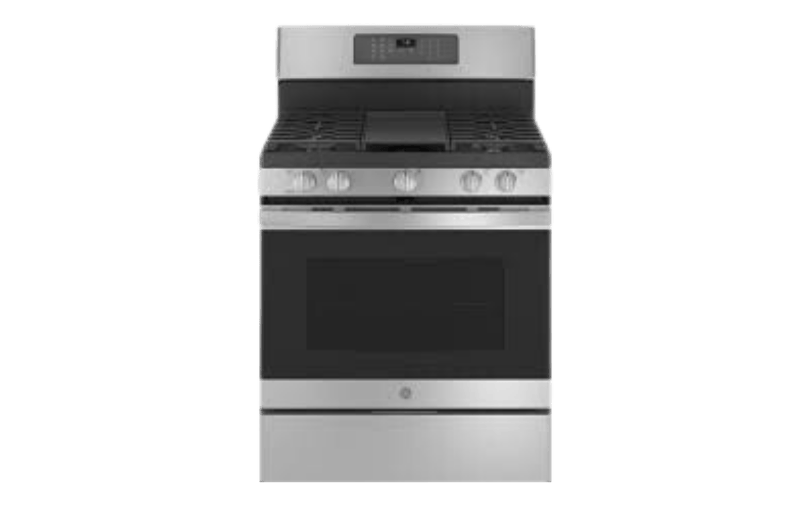
1. Freestanding Gas Convection Ovens
2. Slide-In Gas Convection Ovens
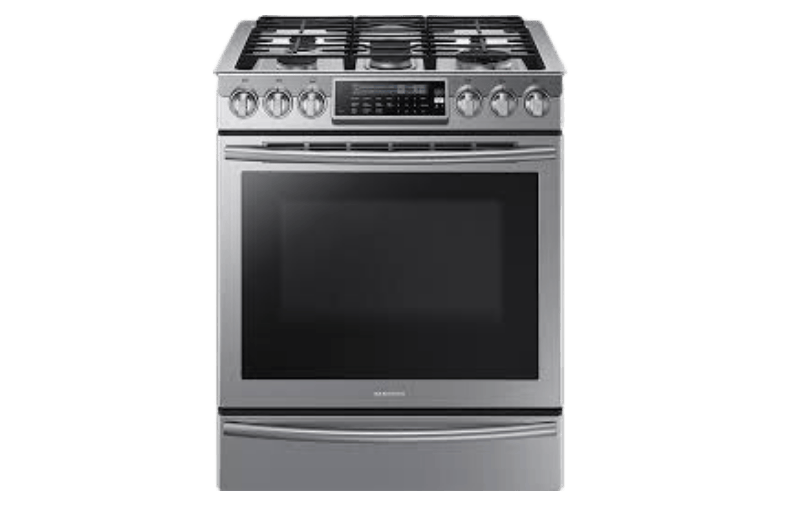
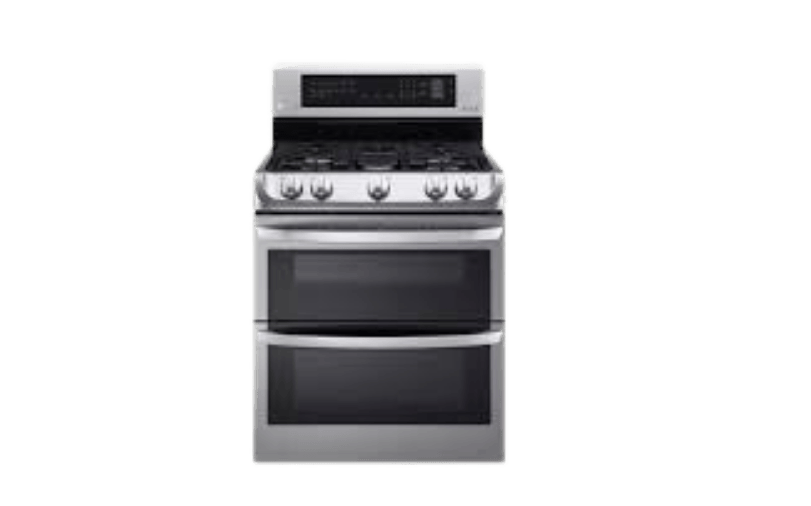
3. Double Oven Gas Convection Ovens
4. Wall-Mounted Gas Convection Ovens
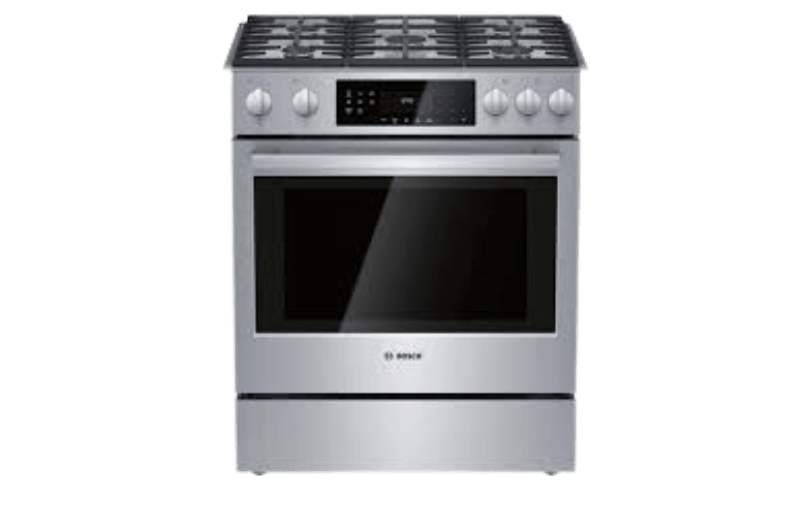
Does a Gas Oven Use Electricity?
Yes, gas ovens use electricity for certain features like the convection fan, oven light, and digital controls. While the primary heat source is gas, electricity powers these additional components, so it’s still important to have a power outlet nearby.
How Much Electricity Does a Gas Oven Use?
A gas convection oven typically uses about 300-500 watts of electricity for its fan, lights, and control panel. This is much less than an electric oven, which relies solely on electricity for heating. If you’re concerned about energy usage, a gas oven might be the more efficient choice.
Types of Electric Convection Ovens
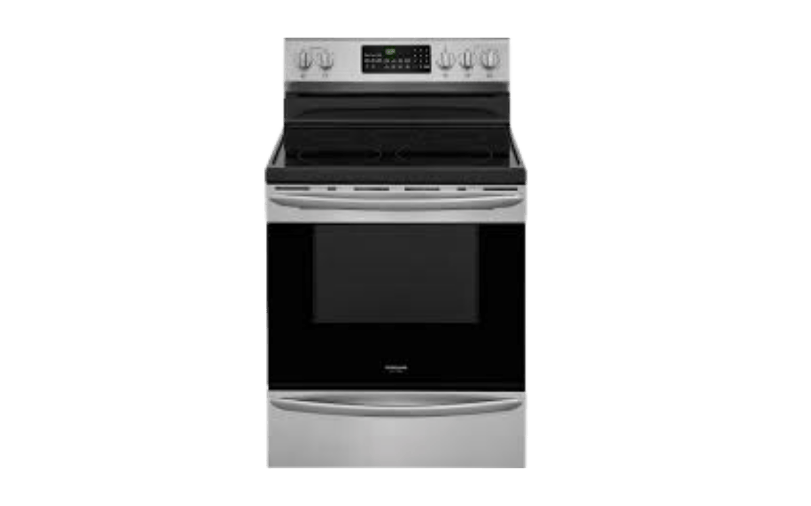
1. Freestanding Electric Convection Ovens
2. Built-In Electric Convection Ovens

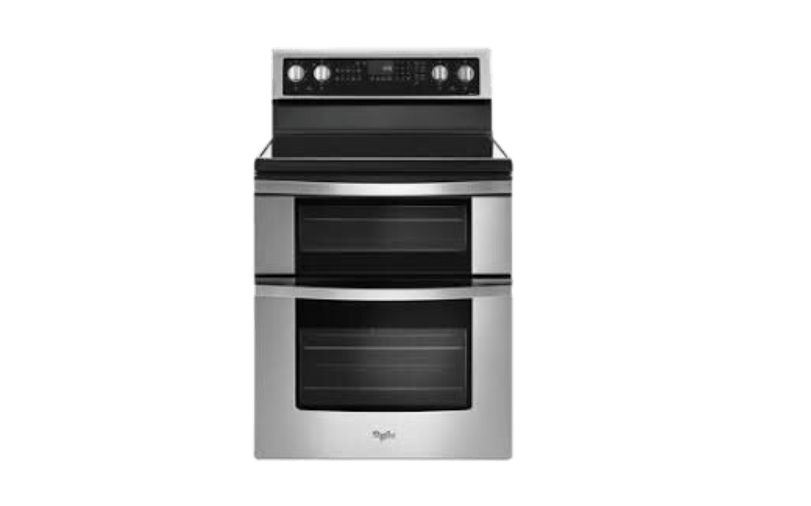
3. Double Electric Convection Ovens
4. Wall-Mounted Electric Convection Ovens

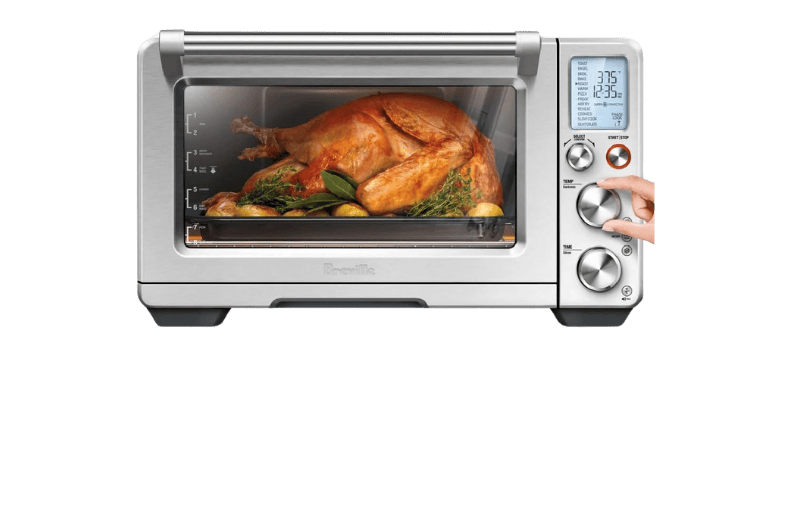
5. Countertop Electric Convection Ovens
Comparison of Gas vs. Electric Convection Oven Types
| Type | Gas Convection Oven | Electric Convection Oven |
|---|---|---|
| Freestanding | Combines gas stovetop and oven; fast heating. | Combines electric stovetop and oven; even heating. |
| Slide-In | Seamless fit, stylish design; requires gas line. | Sleek design, easy access; precise temperature control. |
| Double Oven | Two oven compartments; good for large meals. | Two oven compartments; versatile for baking and roasting. |
| Wall-Mounted | Saves space, built into wall; needs professional setup. | Built into the wall; sleek look and precise temperature. |
| Countertop | Rarely found; most are electric. | Portable, compact; ideal for small kitchens. |
Budget-Friendly Gas Convection Ovens
| Model | Price (USD) | Dimensions (H x W x D) | Oven Capacity | Number of Burners |
|---|---|---|---|---|
| GE JGB735SPSS | $1,049 | 47″ x 30″ x 28.75″ | 5.0 cu. ft. | 5 |
| Frigidaire FCRG3083AS | $899 | 47″ x 30″ x 25.75″ | 5.0 cu. ft. | 5 |
| Whirlpool WFG320M0BS | $799 | 46.25″ x 29.88″ x 27.25″ | 5.1 cu. ft. | 4 |
Budget-Friendly Electric Convection Ovens
| Model | Price (USD) | Dimensions (H x W x D) | Oven Capacity | Number of Burners |
|---|---|---|---|---|
| GE JB645RKSS | $799 | 47″ x 30″ x 28″ | 5.3 cu. ft. | 4 |
| Samsung NE63A6111SS | $849 | 47.13″ x 29.88″ x 28.68″ | 6.3 cu. ft. | 5 |
| Frigidaire FFEF3054TS | $799 | 47″ x 30″ x 28.41″ | 5.3 cu. ft. | 5 |
Detailed Comparison: Gas Convection Oven vs. Electric Convection Oven
When it comes to choosing between a gas and an electric convection oven, it’s important to look at the differences side by side. Let’s explore the factors that matter most, from installation and cooking performance to costs and safety.
1. Installation and Setup
2. Cooking Performance
3. Temperature Control and Precision
4. Operating Costs and Energy Efficiency
5. Maintenance and Durability
6. Safety
Pros & Cons of Gas Oven and Electric Oven
While both gas and electric convection ovens use a fan to circulate hot air, they differ in how they generate that heat. Gas ovens use a flame from a gas burner, which heats quickly and creates a moist cooking environment. Electric ovens rely on electric heating elements, which provide steady, even heat. This difference affects cooking performance, versatility, and installation needs.
Gas Convection Ovens: The Power of Flames
Pros of Gas Convection Ovens
Cons of Gas Convection Ovens
Personal Insight
I’ve noticed that gas convection ovens bring out a richer, roasted flavor in meats. The skin gets beautifully crispy when I roast a whole chicken while the inside stays moist.
Electric Convection Ovens: Even Heat, Every Time
Electric convection ovens use an electric heating element. These ovens are known for their consistent temperature control and even heat distribution, making them a favorite among bakers.
Pros of Electric Convection Ovens
Cons of Electric Convection Ovens
Personal Insight
When I’m baking a batch of delicate macarons, I rely on my electric convection oven. The even heat ensures every cookie rises perfectly, with that signature crisp edge and chewy center.
Cooking Experience: Gas vs. Electric Ovens in the Kitchen
So, how does it feel to cook with these ovens? Let’s get real about the cooking experience.
With a gas convection oven, you get that powerful burst of heat. It’s like driving a sports car — responsive and fast. This makes it fantastic for high-heat cooking like searing, grilling, and roasting. When I cook a steak, I prefer the gas oven because it gives me that perfect sear.
Electric convection ovens are more like a reliable sedans. They might not have the same roar, but they offer a smooth, steady ride. This is what makes them so good for baking. When I’m making a delicate souffle or a batch of muffins, I trust my electric oven to keep the temperature consistent and prevent any sudden drops.
Best of Both Worlds: Some people opt for a dual-fuel range, which combines a gas stovetop with an electric convection oven. It’s a bit pricier but gives you the best of both types.
| Dish | Gas Convection Oven | Electric Convection Oven |
|---|---|---|
| Roast Chicken | 350°F for 1 hour 20 minutes | 350°F for 1 hour 30 minutes |
| Baked Potatoes | 400°F for 45-50 minutes (moist inside) | 400°F for 50-55 minutes (crispier skin) |
| Pizza | 450°F for 10-12 minutes (crispy crust) | 450°F for 12-15 minutes (evenly baked) |
| Lasagna | 375°F for 45-50 minutes (moist, browned top) | 375°F for 50-55 minutes (evenly cooked) |
| Cookies | 350°F for 8-10 minutes (slightly softer) | 350°F for 10-12 minutes (crisp edges) |
| Bread Loaf | 375°F for 30-35 minutes (quick rise) | 375°F for 35-40 minutes (even rise) |
| Steak (Broiled) | High heat for 5-6 minutes per side (charred) | High heat for 6-8 minutes per side (even cook) |
| Apple Pie | 400°F for 45-50 minutes (moister filling) | 400°F for 50-55 minutes (crisp crust) |
| Roast Vegetables | 425°F for 20-25 minutes (caramelized edges) | 425°F for 25-30 minutes (even roast) |
| Macarons | Not recommended (inconsistent heat) | 300°F for 15-18 minutes (perfect rise) |
Faster Cooking with Gas: Gas convection ovens generally cook faster, especially for dishes that benefit from high, direct heat like roasting meats or baking pizzas.
Consistency with Electric: Electric convection ovens offer more consistent and even cooking, making them ideal for baked goods like cookies, macarons, and cakes where precise temperature is key.
Moist vs. Dry Heat: Gas ovens provide moisture heat, which can be beneficial for certain dishes like roast chicken and baked potatoes. Electric ovens offer dry, even heat, which results in crispier textures, especially for baked goods and pastries.
Broiling and High Heat Cooking: Gas ovens tend to char and sear better due to the intense flame, making them excellent for broiling steaks or roasting vegetables quickly. Electric ovens, while slightly slower, cook more evenly.
Pro Tip: Adjust your cooking time and temperature when switching between gas and electric convection ovens. For electric ovens, reduce the temperature by 25°F or shorten the cooking time by about 10-15% to avoid overcooking.
Common Misconceptions
Let’s clear up a few myths about gas and electric convection ovens:
Cleaning and Maintenance Tips for Gas and Electric Convection Ovens
Keeping your convection oven clean isn’t just about aesthetics — it directly affects its performance. Whether you own a gas or electric convection oven, regular cleaning, and proper maintenance can help extend its lifespan, prevent unpleasant odors, and ensure that your food always tastes its best. Here’s how to keep your oven spotless and running smoothly.
1. Regular Cleaning Routine: Your Oven’s Best Friend
Let’s face it: nobody loves cleaning the oven. But trust me, it’s easier to do a quick wipe-down after each use than to tackle baked-on grime later. Here’s a simple cleaning routine to follow:
2. Self-Cleaning Mode: A Handy Feature in Electric Ovens
Many electric convection ovens come with a self-cleaning feature, which is a lifesaver for busy households. This mode heats the oven to an extremely high temperature (over 900°F), turning any grease or food residue into ash that you can easily wipe away.
How to Use the Self-Cleaning Feature Safely:
3. Cleaning a Gas Convection Oven: Special Considerations
Gas ovens require a bit more attention, especially when it comes to the burners and gas jets. Here’s how to clean your gas convection oven safely:
4. Deep Cleaning Tips: Getting Rid of Tough Stains
If you’re dealing with stubborn, baked-on grease or burnt food, don’t worry. Here are some effective, eco-friendly methods for deep cleaning your oven:
5. Safe Cleaning Products: What to Use and What to Avoid
Not all cleaning products are created equal, especially when it comes to ovens. Here’s a quick guide on what’s safe and what to skip:
6. Maintenance Tips: Keep Your Oven Running Smoothly
Regular maintenance isn’t just about cleaning. It also involves checking a few key components to ensure your convection oven performs at its best:
A Clean Oven Is a Happy Oven
Regular cleaning and maintenance might not be the most exciting part of cooking, but it’s essential for getting the best results. Whether you have a gas or electric convection oven, following these tips will keep it looking great, working efficiently, and cooking your food perfectly every time.
So, roll up your sleeves, grab some vinegar and baking soda, and give your oven the TLC it deserves. Your next batch of cookies or roast chicken will thank you for it!
Commercial Models and Brand Recommendations
If you’re considering a commercial or high-performance model, here are some popular options:
Popular Models for Home Use:
A Quick Recap: Gas vs. Electric Convection Ovens
Here’s a quick guide to help you decide:
Deciding between a gas and electric convection oven ultimately comes down to your cooking style, kitchen setup, and budget. If you roast meats frequently and want fast heating, a gas convection oven could be your best bet. On the other hand, if you love baking and want precise temperature control, an electric convection oven might be the way to go.
No matter which type you choose, both offer great features that can elevate your cooking experience. So, take your time, consider your needs, and make the choice that’s right for you. Happy cooking and baking!
If you’re still unsure which oven to choose, feel free to leave a comment below or ask a question. I’d be happy to help you make the best choice for your kitchen. Don’t forget to check out the links for the best budget-friendly options available online.
Frequently Asked Questions (FAQs)
Can You Use a Convection Oven for Air Frying?
Yes, many convection ovens have an air fry feature, utilizing the fan to circulate hot air and create crispy, fried-like textures without using much oil.
Why Does a Convection Oven Cook Faster Than a Regular Oven?
Convection ovens use a fan to circulate hot air, which speeds up the cooking process by evenly distributing heat and reducing cooking time by about 25%.
Is It Safe to Use Aluminum Foil in a Convection Oven?
Yes, but use it carefully. Place foil only on the baking sheet, not on the oven walls, as it can disrupt airflow and cause uneven cooking.
What Dishes Should Not Be Cooked in a Convection Oven?
Delicate desserts like soufflés and custards may not turn out well in convection ovens due to the intense air circulation, which can cause them to collapse.
Can I Bake Bread in a Convection Oven?
Yes, convection ovens are great for baking bread. The even heat distribution helps achieve a perfect crust while keeping the inside soft.
What’s the Difference Between Convection Baking and Convection Roasting?
Convection baking uses the fan for even heat distribution, ideal for pastries and baked goods. Convection roasting uses a higher heat setting and a fan, perfect for browning meats and vegetables.
Should You Preheat a Convection Oven?
Yes, preheating ensures that the oven reaches the right temperature before cooking, allowing for even baking and roasting.
Can You Use a Convection Oven for Dehydrating Food?
Yes, the fan and consistent low heat make convection ovens great for dehydrating fruits, vegetables, and herbs.
How Do You Adjust Recipes for a Convection Oven?
Reduce the temperature by 25°F or decrease the cooking time by about 10-15% to avoid overcooking in a convection oven.
Is It Better to Bake Cookies on Convection or Regular Bake?
Convection bake is better for cookies if you want a crisp exterior and soft interior. The circulating air helps cook them evenly.
What Is the Best Rack Position for Baking in a Convection Oven?
The middle rack is usually the best position for even cooking, allowing the air to circulate freely around the food.
Can You Use a Convection Oven Without the Fan?
Yes, most convection ovens have a regular bake mode that does not use the fan, allowing you to choose based on the dish you’re preparing.
How Often Should You Clean the Fan in a Convection Oven?
The fan should be cleaned every few months, depending on usage, to prevent grease buildup and ensure efficient air circulation.
Do Convection Ovens Use More Energy Than Regular Ovens?
Not necessarily. Convection ovens often use less energy because they cook faster and at lower temperatures, despite using a fan.
Can You Cook Pizza in a Convection Oven?
Yes, convection ovens are great for pizza. The circulating air helps create a crispy crust while melting the cheese evenly.
Is a Convection Oven Gas or Electric?
A common question is whether convection ovens are gas or electric. The answer is: both! Convection ovens can be powered by gas or electricity, depending on the model you choose. Gas convection ovens offer moist heat, while electric models provide even, dry heat.
Is It Necessary to Rotate Pans in a Convection Oven?
While convection ovens cook more evenly, rotating pans halfway through baking can still help achieve the best results, especially for large or dense items.
Why Does My Convection Oven Make Noise?
The noise usually comes from the fan. It’s normal, but if the noise is unusually loud or rattling, it could indicate a problem with the fan motor.
Can You Use Glass Bakeware in a Convection Oven?
Yes, but be cautious. Glass bakeware heats up quickly in convection ovens, so reduce the temperature slightly to prevent over-browning.
How Long Does It Take to Cook a Turkey in a Convection Oven?
A 12-pound turkey typically cooks in about 2-2.5 hours at 325°F in a convection oven, faster than in a conventional oven.
What Are the Best Pans to Use in a Convection Oven?
Shallow, light-colored metal pans work best in convection ovens as they allow the hot air to circulate better and cook food evenly.
